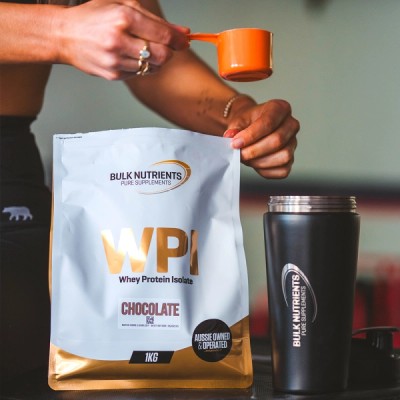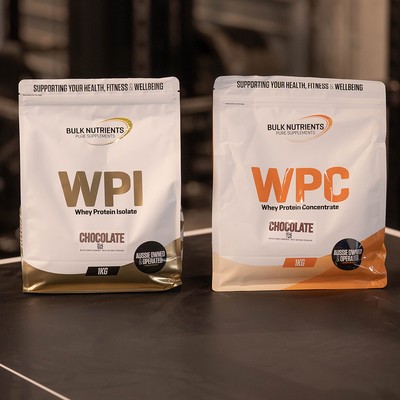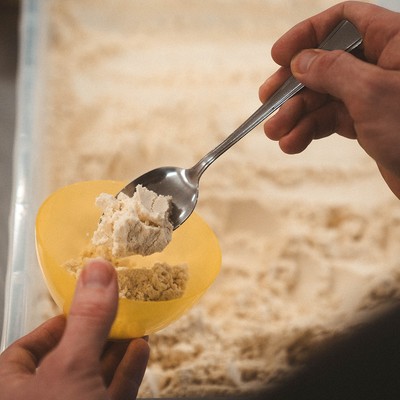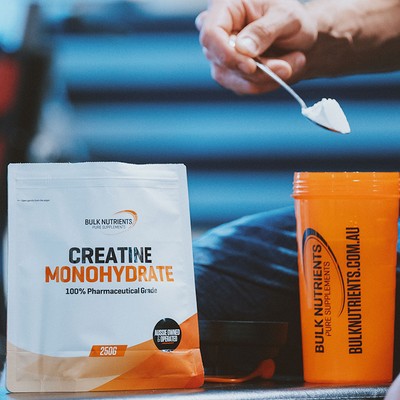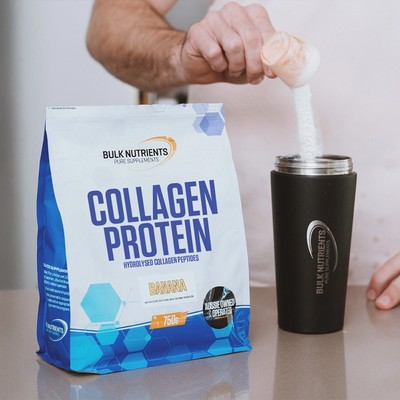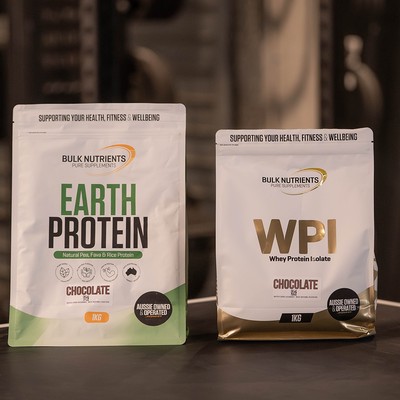Will These Fancy New Barbells Help Us Grow More Muscle?

Does the new free-grip barbell help us grow more muscle?
Here's a photograph of the free-grip barbell:

The free-grip barbell is meant to act like dumbbells; when you start at the bottom of a bench press movement, the grips are wide, and they slide inwards as you press the weight up.
Watch this YouTube video and take a look at the gentleman's hands below to see this in action, at the start and finish of a bench press repetition.
So, it leaves us with some questions: how much better is this barbell, that acts like dumbbells, for muscle growth? Can this barbell combine the benefits of both a barbell and a dumbbell?
Firstly, dumbbell chest presses have been found to call upon more stability requirements from the chest and might be better at chest activation compared to barbells, but this isn't always consistent and hotly debated.
With all of this in mind, a recent study examined the free-grip barbell to see how it went, utilising two female and seven male subjects aged 22 to 49 years.
What did the research say?
A massive 19.5% increase in chest activity (via EMG) for the free-grip barbell in comparison to the normal barbell.
The researchers say that the free-grip barbell's ability for one to handle more weights in a safer manner, and the additional resistance in the horizontal plane due to the resistance caused by the sliding handles, allowed for some advantages here.
And that's not just over the regular barbell but the dumbbells too.
The researchers (who declare NO conflict of interest with the makers of the barbell) say there would be "greater activation time" with the free-grip barbell compared to dumbbell bench presses.

They point to previous research that found barbell bench presses led to greater activation time in both the chest and front deltoids compared to dumbbell bench presses, meaning a combination of both might be better.
So, does this mean that we should run out and demand that our gym buy some of these bars? Or that we set up a home gym just so we can use one?
Well, not quite. There is more to the story...
EMG, which stands for electromyography, was used to measure muscle activity here. This is when researchers place electrodes on muscles to record their activation. Now it's effective but not as good as alternative measures.
For example, MRI (magnetic resonance imaging) directly examines peripheral changes. Moreover, ultrasound is more effective than EMG at evaluating more muscle fibers.
- EMG: Tells us how much the muscle is being activated
- Ultrasound: Can measure muscle growth directly after a period of exercise
Furthermore, research shows that MRI and EMG complement each other; they both have their advantages when we’re learning about muscle activation in various exercises. But the bottom line is that ultrasound reigns supreme for a definitive answer.
The issue with EMG studies is that they don't necessarily mean that more muscle motor units are being utilised.
But the other issue is that because the subjects all had different EMG readings with this free-grip barbell. This is quite common in EMG studies, so it meant the nearly 20% increase was statistically non-significant.
So, do we give up on these free-grip barbells and just dismiss them as a gimmick?

Well, not entirely. There still needs to be more research...
But we think we all should hold off on them until more research is conducted! The fact some subjects saw nearly a 20% increase in chest activity might just mean there's some light at the end of the tunnel here.
Let's hope more research is done NOT using EMG, and we learn something more definitive. If the results are then positive, then we'll be recommending them for sure!
But that being said, if you happen to come across a free-grip barbell, use it and like it, then keep doing it!
It's critical we train to utilise the exercises that we enjoy. And given what we do know about the free-grip barbell; utilising it certainly won't be detrimental.

Dayne Hudson
Like many, Dayne was once desperate to lose weight and get into shape. But everyone he asked, everything he read, lead to the same place... nowhere.
His journey started there - researching science journals and completing a Sports Nutrition Specialist qualification so he could make weight loss easier.
References:
- Duarte ML, Iared W, Oliveira ASB, Dos Santos LR, Peccin MS. Ultrasound versus electromyography for the detection of fasciculation in amyotrophic lateral sclerosis: systematic review and meta-analysis. Radiol Bras. 2020;53(2):116-121. doi:10.1590/0100-3984.2019.0055
- Melani A, Gobbi G, Galli D, Carubbi C, Masselli E, Neri LM, Giovinco G, Cicchella A, Galuppo L, Presta V, Vaccarezza M, Vitale M, Mirandola P. Muscle Activation in Traditional and Experimental Barbell Bench Press Exercise: A Potential New Tool for Fitness Maintenance. Sports (Basel). 2019 Oct 17;7(10):224. doi: 10.3390/sports7100224. PMID: 31627293; PMCID: PMC6835758.
- Price TB, Kamen G, Damon BM, Knight CA, Applegate B, Gore JC, Eward K, Signorile JF. Comparison of MRI with EMG to study muscle activity associated with dynamic plantar flexion. Magn Reson Imaging. 2003 Oct;21(8):853-61. doi: 10.1016/s0730-725x(03)00183-8. PMID: 14599535.
- Saeterbakken, A.H.; van den Tillaar, R.; Fimland, M.S. A comparison of muscle activity and 1-RM strength of three chest-press exercises with different stability requirements. J. Sports Sci. 2011, 29, 533–538.
- Vigotsky, Andrew D.; Beardsley, Chris; Contreras, Bret; Steele, James; Ogborn, Dan; Phillips, Stuart M. Greater Electromyographic Responses Do Not Imply Greater Motor Unit Recruitment and ‘Hypertrophic Potential’ Cannot Be Inferred, Journal of Strength and Conditioning Research: January 2017 - Volume 31 - Issue 1 - p e1-e4 doi: 10.1519/JSC.0000000000001249




